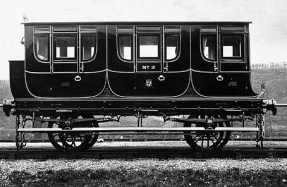
“Great and wonderful is man who conceived and constructed the railway train! It is almost alive! It flies along of itself, and carries its maker in its arms like a child! How beautiful! How glorious is the locomotive! The lightning on wheels! The horse made divine!”1
The Lancashire writer Allen Clarke (1863-1935) loved railways. He spent much of his life travelling backwards and forwards between his Bolton birthplace and his later adopted home of Blackpool by train, when he wasn’t making the journey by bike. An exploration of Allen Clarke’s writings about railways (often written under his ‘Teddy Ashton’ pseudonym) adds a different dimension to his industrial writing, which tended to feature mostly factory life. For Clarke the train was a liberation, a way of escaping from the smoke and grime of Bolton to the seaside. In his later years the train offered a less strenuous way ‘home’ to visit friends in Bolton, instead of the trusty bike. Many of his railway writings were featured in his newspapers The Bolton Trotter and later Teddy Ashton’s Northern Weekly, both of which he edited and wrote most of the material himself.
Childhood memories
Some of his earliest boyhood memories, from the early 1870s, are of the ‘chep [cheap] trip’ from Bolton to Blackpool. Instead of trains leaving the main Trinity Street station, specials would depart at the crack of dawn (or earlier) from Bullfield Siding, just west of the station, returning late in the evening. Easter and Whitsuntide were popular, also mid-August – ‘The Operatives Holiday’, when the mills closed down. The longer ‘wakes’ weeks came later.
The powerful Bolton Co-operative Society ran several excursions each holiday time. In 1891 it advertised ‘specials’ to Llandudno, Liverpool and two trains each to Morecambe and Southport with three to Blackpool. All the Blackpool trains were advertised leaving from Bullfield Siding with a day return fare of 2s 3d and an ‘extension ticket’ costing 3s 6d.2
Reminiscing many years later, he recalled ‘the chep trip’ of the 1870s: “The ‘chep trip’ of those days started very early in the morning, and the day fare was half-a-crown. The train accommodation was crude, primitive. Hard cushionless carriages. Indeed, sometimes cattle trucks were cleaned and fitted up with a few seats for cheap excursions. As a boy I rode in one with




